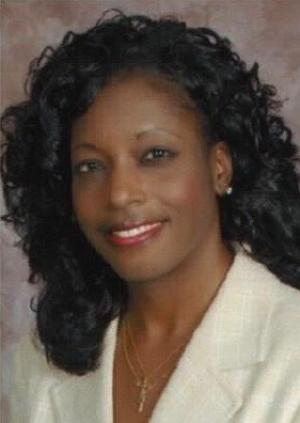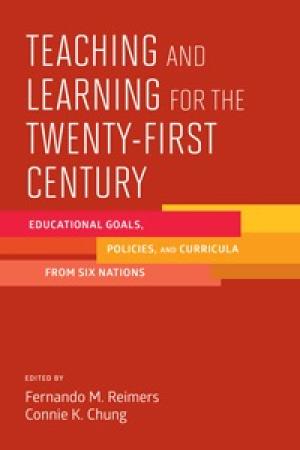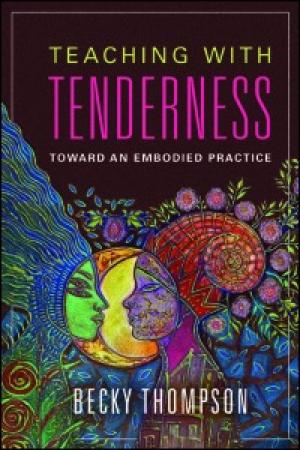Resources

Teaching-learning is often a perilous process. Occasionally, in the midst of delivering carefully structured lectures, facilitating balanced yet critically engaging discussions, or working with students one-on-one, life intervenes in a dramatic and direct fashion. Three years ago, I was teaching a summer course on Methodist church history for Master of Divinity students pursuing ordination at Perkins School of Theology at Southern Methodist University. Right after we began the section on Black Methodism, Dylann Roof walked into a Bible study class at Emanuel African Methodist Episcopal Church in Charleston, South Carolina and killed nine people, including the pastor. The world was rife with shock and grief. We, ourselves church leaders, Bible study teachers, and ministerial workers, were actively engaged in crafting understandings of ecclesiastical history in order to refine vocational skills. Students (and instructor) processed painful emotions derived from a current event that hit close to home. Empathy with the victims and their families mingled with rage, disbelief, and ultimately, compassion for the tormented assailant. Socrates reportedly once said, “I cannot teach anybody anything. I can only make them think.” For me, as instructor, a pedagogical opportunity had arisen. I found myself addressing a contemporary demonstration of the societal and cultural terror that necessitated the original founding of Black Methodism while teaching a section on Black Methodism in a Methodist history class. In that moment, critical analysis of the broader sweep of church history and its convergence within the present was essential. It was important to help students utilize the historical information they were acquiring in light of current events. Balancing both sets of data, the historical record and the contemporary event, opened the way for collective inquiry, sharing, and judging right there in the classroom. This experience reveals a wider view of pedagogical method. By allowing students to ask and respond to critical questions, underlying assumptions are revealed. Students are then invited to further examine the nature of their assumptions. Have key events and concepts been adequately accessed? Does other relevant information exist that may shed light on these assessments? What are the logical implications of this view? Are there alternatives? If so, are they just as reasonable? Thus, one of the ways student-learners develop critical thinking skills is through the facilitation of teacher-learners who ask questions and respond to answers with more questions. While acknowledging the contributions of students equitably (and encouraging all to participate) facilitators move the discussion forward by engaging questions that maintain focus on the stated goals of the course. This includes summarizing the status of reflections, critical points, and remaining questions. However, it is also crucial to keep in mind that students may harbor feelings of trauma and stress sparked by the evaluation of historical knowledge and associated current events. Creating a classroom that nurtures the student voice through affirmation of shared experience fosters safe space. The use of critical thinking in analyzing history, which is oftentimes quite troubling, engenders the technique of practical engagement with personal and social traumas. And, sensitivity to cultural diversity, religious difference, and doctrinal belief is paramount in cultivating a healing environment. This includes the overt recognition and appreciation of differing and conflicting opinions. Paying attention to the energy of the class, body language of students, and other contextual signs will determine choice of direction that a teacher-learner may take, even while encouraging rational analysis of stated views. Taking a synergistic approach, that is, dialectical interaction among teacher-learners and student-learners, therefore allows room for reasoned critique of hypothetical assumptions as well as the emotional processing of potentially painful experiences. Effective execution requires heightened attention to the needs of students and patience with the flow of communication. This can be challenging, particularly when unexpected realities shatter benignly anticipated teaching moments carefully structured by course design. Instructors must, therefore, be gentle with themselves and practice flexibility in meeting the demands of challenging and/or controversial teaching moments. Although teaching does involve the transmission of knowledge, the ultimate goal of teaching lies in the cultivation of tools that allow students effective engagement in critical discernment of the world, leading to reasonably based decision making. In our Methodist History course, the shootings by a crazed supremacist at the historic Mother Emmanuel Church were a sobering occasion that offered the chance for systemic appraisal of institutional structures in church and society that continue to perpetuate racial violence. This unfortunate and deeply traumatic event provided context to evaluate broadly how various interlocking systems lead to experiential sufferings that are typically passed down generationally. As we grappled with the pain enkindled by this senseless act (which will reverberate in the annals of traumatic historical events) insightful theological and practical observations, deduced by critical analysis, were honed. Like the rest of the world, our class did not emerge emotionally unscathed by facing the horrors of history alive and well in today’s world that mournful day. We did, however, incorporate pedagogical tools, that, with repeated and improved use, are designed to foster growth and empowerment in teaching, learning, and living as responsible citizens.
Ground TransportationAbout a week prior to your travel you will receive an email from Beth Reffett (reffettb@wabash.edu) with airport shuttle information. This email includes the cell phone number of your driver, where to meet, and fellow participants with arrival times. Please print off these instructions and carry them with you.Contact Information on Day of TravelWabash Center: 800-655-7117After Hours: as directed in the travel email sent the week prior to travelVenue (Mustang Island Conference Center): 361-749-1800The Travel Authority (to make changes to flights, if reservations were made using our travel agent)800-837-6568 Tami Brubaker tami.brubaker@altour.comThommi Weliever thommi.weliever@altour.com
Travel Information for Participants Already Accepted into the WorkshopGround Transportation: About a week prior to your travel you will receive an email from Beth Reffett (reffettb@wabash.edu) with airport shuttle information. This email includes the cell phone number of your driver, where to meet, and fellow participants with arrival times. Please print off these instructions and carry them with you.
Video. Pedagogy & Theatre of the Oppressed, Inc. (PTO) supports people whose work challenges oppressive systems by promoting critical thinking and social justice through liberatory theatre and popular education. Our vision is to create global access to popular education pedagogy and liberatory theatre of the oppressed methods to support a world based on radical love and social justice in stead of oppression and violence.
Podcast. Leading thinkers in the church, the academy, and the non-profit world giving the talk of their lives in 20-minutes or less.
The Critical Thinking Initiative podcast is a response to the low critical thinking outcomes among U.S. students across all levels of education. Each episode dispels myths about teaching critical thinking education and discusses cutting-edge, research-supported ways to actually improve critical thinking in any discipline.
Ground TransportationAbout a week prior to your travel you will receive an email from Beth Reffett (reffettb@wabash.edu) with airport shuttle information (pdf). This email includes the cell phone number of your driver, where to meet, and fellow participants with arrival times. Please print off these instructions and carry them with you.

This groundbreaking text does not approach teaching and learning from the do’s and don’ts (the mechanics and tools of pedagogy) but instead offers a comparative cross-national investigation of the goals and purposes of education in Singapore, China, Chile, Mexico, India, and the United States. What has each country set as its goals and purposes for the twenty-first century context of close global interactions and rapid information and communication technologies? And how does each assess tangible outcomes? An overarching inter-country similarity is that the goals of pedagogy result from both changes in each country’s contemporary particularity and in their evolving definitions of the global. For instance, in the twenty-first century, each country faces fast and fluid developments signified by the necessity of learning to learn, of competency of certification, and of online learning. How should teaching and learning respond? Should a nation or civilization choose the route of achieving adaptability to evolving goals? Or should a country center on the technical challenges related to a school’s function? Succinctly, goals mean who should learn what. These goals are not neutral or objective. Various stakeholders in society are vying for the appropriate ways of teaching and learning. Governments seek pedagogical goals that produce patriotic citizens; businesses want ideal employees; faith communities desire moral human beings; graduate schools look for highly educated applicants; not-for-profits hope for volunteer-minded people; and parents seek teaching and learning so their children can achieve meaningful employment or, in some case, simply employment. Drawing on a sophisticated and comprehensive study from the National Research Council (NRC), this book frames each of the six countries within three broad pedagogical rubrics – cognitive, intrapersonal, and interpersonal competencies – that are learned by both teachers and students. Each generic rubric contains relevant subsections. Specifically, cognitive competencies include cognitive processes and strategies, knowledge, and creativity; intrapersonal competencies include intellectual openness, work ethic/conscientiousness, and positive core self-evaluation; and interpersonal competencies include teamwork and collaboration along with leadership development. How does each country implement in practical concretes this NRC framework? The co-editors chose the NRC study because, in their research, it represents the most all-encompassing and science-based study of twenty-first century skills when compared to the other major studies in the world. The NRC readily admits that many aims within its teaching and learning investigations are not novel. But what is new (and is fundamentally different from all prior historical contexts) is that these sought-after competencies no longer belong to the elites of the world (including the United States). All countries now de jure or at least subscribe to a democratization of pedagogical goals for a diversity of citizens. Indeed, a vibrant twenty-first century country requires universal goals for each citizen. After an elaborate and nuanced review of the six countries, the book offers a concluding chapter with the following recommendation. Each nation necessitates a systems theory to integrate all aspects of a country’s goals, methods, practices, and assessment mechanisms to achieve the established competencies. The best system will be one that connects fluid, adaptable, logical, and coherent relationships among curricula, school organization and management, various teaching and learning approaches (such as independent study, didactic pedagogy, outdoor education, and project-based learning), effective communication mechanisms, and emotional buy-in from society’s stakeholders. I highly recommend this book for any civic-minded people, especially those wanting to achieve professional development for teachers and to prepare students for new ways of learning now.

Antagonisms, conflicts, and oppositions characterize societal relations. Becky Thompson acknowledges these realities throughout her book with careful attention and still makes the case for a post-oppositional approach. This is the book’s greatest strength, offering hope and healing through tenderness while walking through the ruin and devastation brought about by dominating power and systems of inequality. Thompson asks, “What rituals might we incorporate into teaching that invite the body into the classroom? What is it about the structure of academe that leads us to flee our bodies? How can we find them again? What risks will this take? What truths do we need to tell about our lives and our teaching that we have been hiding from ourselves, or barely whispering? How might inviting bodies into the classroom change how we seek justice in the world?” (13). Thompson responds to each of these questions by leading readers through an interdisciplinary and innovative collection of figures and concepts without sacrificing the book’s rigor. Given the hardening of boundaries and identities in discussions about power and privilege, Thompson’s work brings a refreshing proposal and argument for countering defensiveness and getting to “a soft place with each other” (36). For teachers of all stripes, this means overcoming a dichotomy between mind and body often inherited and passed along in the academe (64). Making a case for “embodied pedagogy” (39), Thompson lifts up the very essential need to facilitate a “resocialization process” (88) whereby students are enabled to feel connected with each other and themselves. Teaching with Tenderness is exceptional because it does not offer easy solutions. For instance, Thompson notes the difficulty of inviting in people’s personal stories “without encouraging an atmosphere where students feel they must share in order to succeed” (72). For teachers untrained in professional therapeutic strategies, overcoming the desire to “outsource the emotional content of our courses” (89) takes soul work and the willingness to deal with the messiness of what Thompson memorably refers to as “the warp and woof” of that which makes us all human (90). The book also offers an implicit challenge to teachers, scholars, and researchers for whom gathering data, research, and analysis is part of their bread and butter. While recognizing these as necessary, Thompson notes that academics need to conduct research “with” and not “on” the communities they are describing or analyzing (108). Thompson’s work speaks to those interested in carving out a new path in teaching and learning where there is neither exclusion nor appropriation, neither denial nor naiveté, neither easy solutions nor pages filled with jargon. This book is a must-read for anyone interested in the challenge and promise of interdisciplinary work that takes the whole person into account as part of envisioning a pedagogy where all things are done as if everyone mattered – body, mind, and all.
Wabash Center Staff Contact
Sarah Farmer, Ph.D
Associate Director
Wabash Center
farmers@wabash.edu